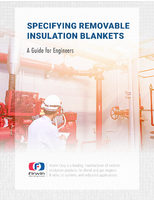Best Customer Experience Wagner People, Product and Performance ISO 9001:2008 Certified
Wagner is pleased to announce that we have received our ISO 9001:2008 Certification. Of particular pride is that Wagner received zero non-conformance during the audit and that Wagner's internal design process was included in the certification.
ISO 9001 is a family of standards for quality management systems. ISO 9001 is maintained by ISO, the International Organization for Standardization and is administered by accreditation and certification bodies.
Wagner pursued ISO 9001 certification in order to meet the requirements of many of our industrial customers. However, the lessons learned and the formalization of processes within Wagner have served to improve all facets of the Wagner organization.
ISO 9001 certification assures that Wagner customers will receive product that conforms to requirements, is dependable and reliable, and is available when needed.
How Much Railing Deflection is "Too Much"?
While the code bodies are clear on load requirements for guards and handrails, when it comes to allowable deflection, there has never been a clear answer to the question above.
In fact, the International Building Code (IBC) does not define allowable deflection in a railing. However, it must be kept in mind that while a railing can withstand a structural load requirement, the deflection may exceed an individual's perception of a safe railing.
American Standards and Testing of Materials (ASTM) E 985 the Standard Specification for Permanent Metal Railing Systems and Rails for Buildings, 7.2.2 states, "When the load is applied at the line of vertical support, the horizontal deflection shall not exceed the rail height (h) divided by 12, or h/12, with h being the distance between the surface of the post anchorage and the top of the top rail." Per section 7.2.3, "When the load is applied at the mid span of the rail, the horizontal deflection shall not exceed the sum of the rail height (h) divided by 24 plus the rail length (l) between the vertical supports divided by 96, or h/24 + l/96. This would result in a 36 inch high rail being allowed to have a maximum deflection of 3 inches, and a 42 inch high rail being allowed to have an allowed deflection of 3.5 inches. These numbers seem excessive.
There is a great online article on this issue, Deflections in Deck and Balcony Railings written by Matthew T. Blackmer, M.S.C.E., P.E. and Edward L. Fronapfel, M.S.C.E., P.E., CFCC. After a review of various standards, they have come to the conclusion that deflection in a 36 inch high railing should be limited to 0.6 inches and 0.7 inches for a 42 inch high railing.
However, when all is said and done, there still is no definitive answer to this question and it is important to determine what is expected by the customer at the start to eliminate issues upon completion.
Wagner Principles for Success
o The Customer is always our #1 priority
o Demonstrate integrity in all you say and do
o Take responsibility for your work
o Gather all the facts before making a decision
o Practice teamwork to the best overall solution
o Play Win/Win
The Wagner Companies
10600 W Brown Deer Rd
Milwaukee, WI 53224
Phone: 888-243-6914




